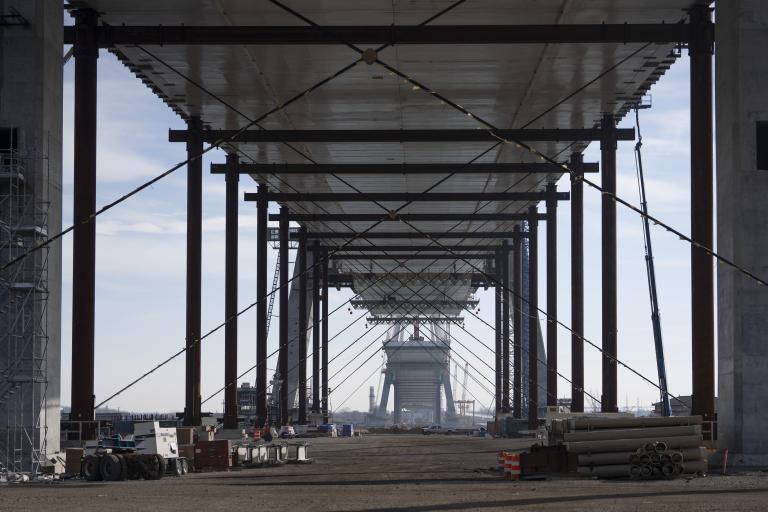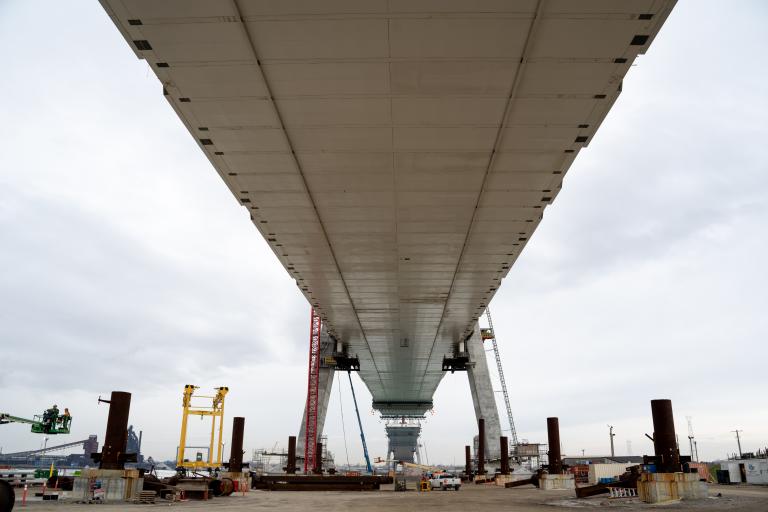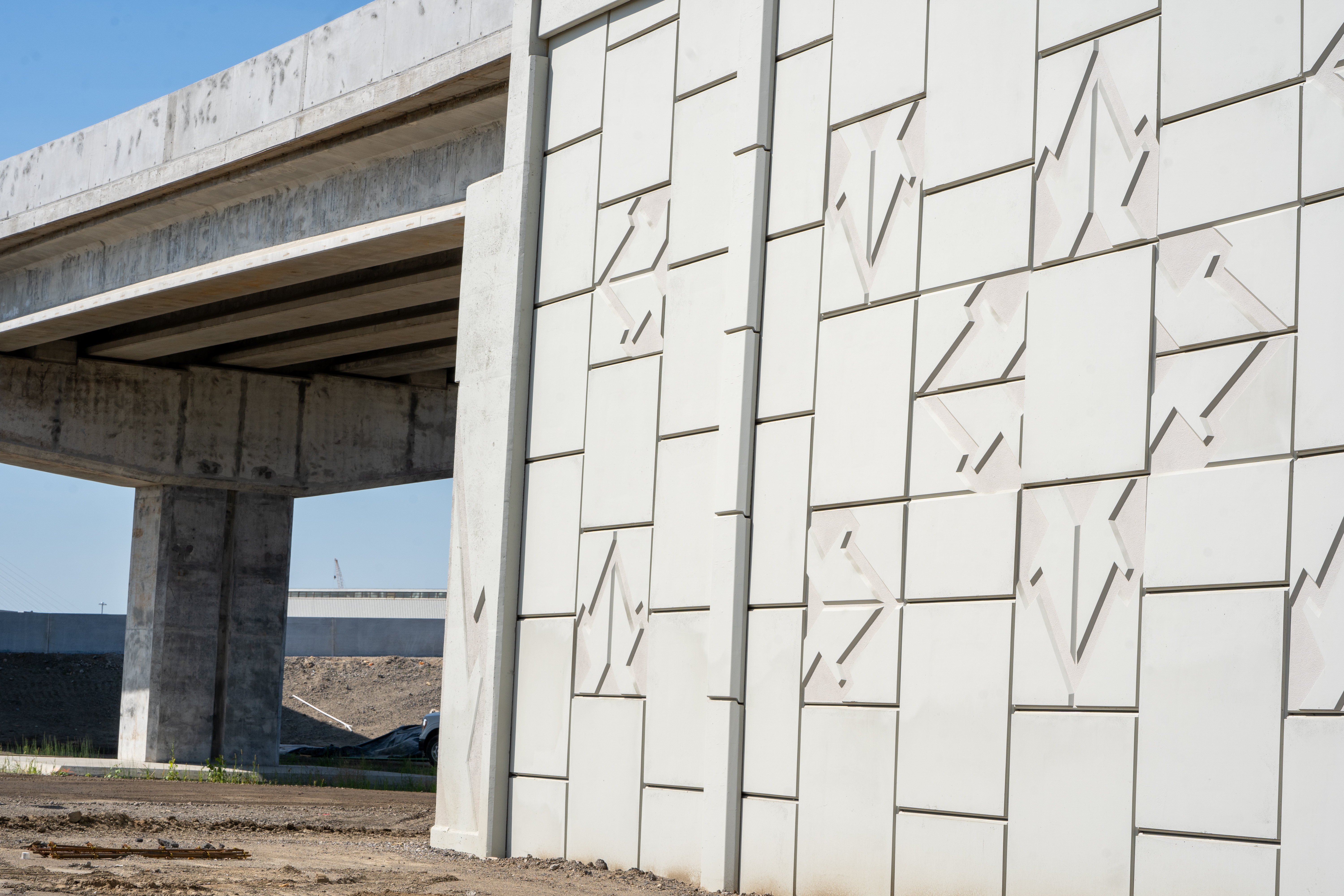As construction progresses on the Gordie Howe International Bridge, new elements are regularly added during construction such as stay cables, beams and girders. But recently, crews removed pieces instead.
Earlier this month, construction crews on both sides of the border began removing falsework bents that worked to support the back span of the road deck. (see image below)
There are 18 falsework bents, nine in Canada and nine in the US, which were temporarily installed to support the back span of the bridge. The phrase “falsework” in construction refers to a temporary support system used to prop up a permanent structure until it can hold itself.


Falsework bents are made of steel with reinforced concrete bases and post-tension cables which connect the two columns and header beams. They range in size depending on where they are positioned under the road deck and are supported by piles 28-33 meters/92-108 feet underground.
These temporary structures were designed to hold the weight of the road deck segments until enough stay cables were installed that the cables could take the load on instead.
Falsework bent removal process
The falsework bent removal process uses a blend of new and old technology. Falsework bents are held in place with reinforced concrete bases filled with sand – an ancient but tried-and-true method to keep them steady. To remove the bents, crews must first remove the sand from the bases. This is achieved by taking off the positioned caps – a piece at the top of the falsework bent closest to the deck – and blowing pressured air in, draining the sand from the bases. Once the sand is removed, the falsework bents safely drop from their locked positioning and the steel pieces are laid down and removed from the project site.
The falsework bent removal process is taking place on both sides of the Detroit River simultaneously. One bent is removed at a time, with each removal taking approximately one day to complete.


Stay cable progress
The Gordie Howe International Bridge requires the installation of 216 stay cables, 108 on each tower. To date, 98 stay cables have been installed from each tower and deck. With these cables in place, falsework bents can safely be removed.
Stringing stay cables is just one part of the installation process. Once a stay cable is installed, crews stress the metal strands inside each pipe until they reach full tension. This is an ongoing process as the bridge deck and road deck are built. Each cable is unique, with cables being adjusted at different times and to different capacities depending on their location.
Once all stay cables are installed and the last bridge deck segments are in place, the cables will go through final adjustments to reach full tension. This work is expected to take place this year.


